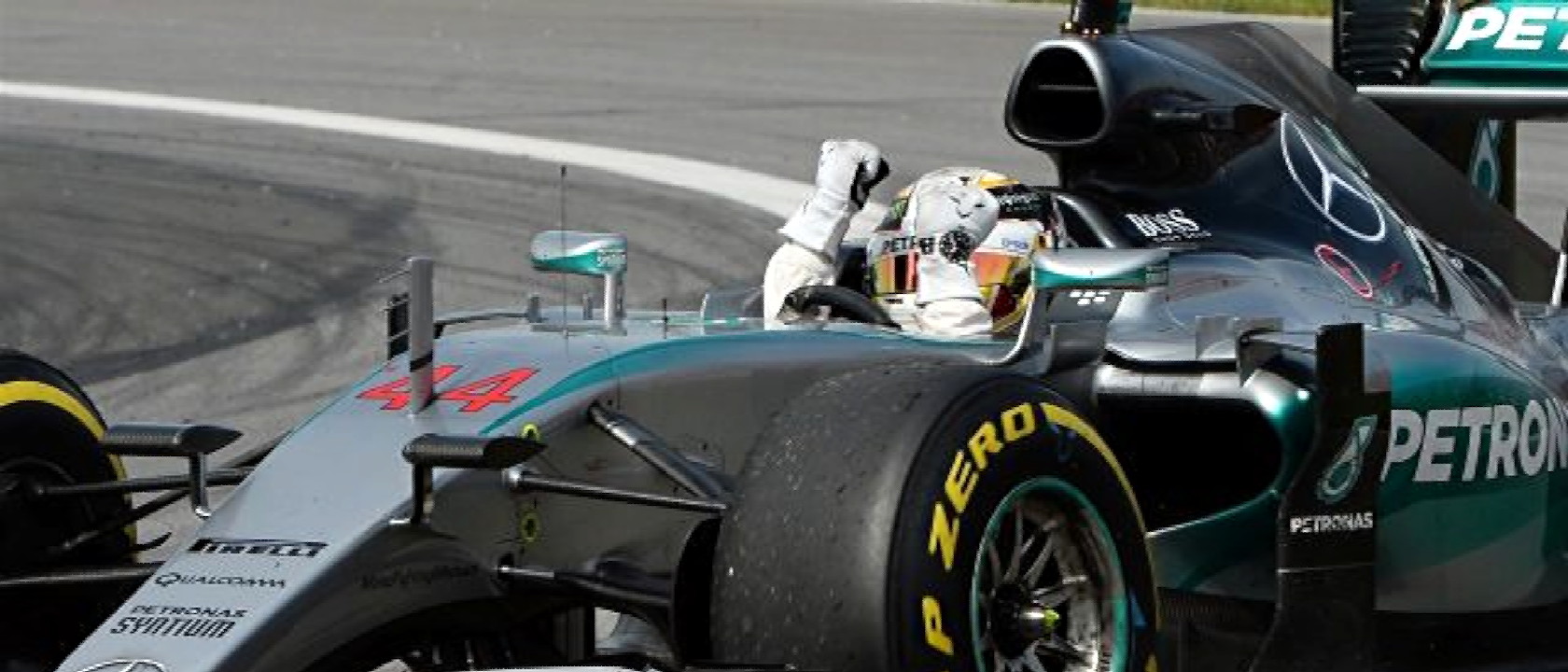It was hardly an exciting race — and as the article embedded below illustrates, this seasons’s Canadian GP plainly revealed some of the serious shortcomings of the current F1 technical regulations — but Lewis Hamilton won from pole for his 4th career Canadian Grand Prix victory in Montreal.
Slow-show is a turn-off for fans
While managing brakes has always been part of racing, and would likely always to be the case at an anchor-heavy circuit such as Montreal, it was unedifying to hear Nico Rosberg being told to back off in his pursuit of the race winner Lewis Hamilton because of brake wear. But that was at least understandable. Far less so were the endless team radio calls to drivers to lift and coast to save fuel, a clear own goal for the sport. F1 introduced a fuel limit of 100kg in a bid to appear greener and force teams to use more efficient engines. Surely nothing is more off-putting to fans than to hear that drivers are backing off rather than racing, just to make it to the flag? Doubtless the teams would have fuelled light expecting the safety car appearance that Montreal usually delivers, but regardless of that the fuel-limit rule achieves nothing. From a PR perspective in making F1 appear environmentally friendly it is so negligible as to be utterly pointless. Better to take some of the vast profit F1’s owner, CVC, makes across the season and spend it on carbon credits to offset the fuel and transport costs from each race – a pioneering move in sport, one that would genuinely help the environment and would be a PR coup.
Ferrari close gap but still have a way to go
Ferrari were expecting to have moved closer to Mercedes having used three engine upgrade tokens for this race. In lap-time terms a true evaluation of where they are was difficult because of how their weekend played out. Sebastian Vettel had good race-pace on Friday and his qualifying form suggested he would have been closer to the Mercedes than his team-mate Kimi Raikonnen. But an electronic control unit problem prevented the German from getting out of first qualifying and his start from 18th, while producing an impressive charge through the field, left one to wonder what he might have shown with only Hamilton and Rosberg in front of him. Raikonnen, too, would probably have had a podium spot but for a spin at the hairpin, which allowed Valtteri Bottas to pass him. But nonetheless his average pace thereafter was several tenths up from earlier in the season. Ferrari’s team principal, Maurizio Arrivabene, will be looking for a real indication at the next round in Austria. “In terms of performance it’s fine. The engine upgrade was giving us the positive answer we were asking for,” he said. “Unfortunately the weekend was not a good weekend because of a number of circumstances, but the response we have from the engine was good.”
McLaren’s woes continue
With their second double retirement of the season and having finished only once in the points – Jenson Button’s eighth in Monaco, where the car’s power shortcomings were flattered – McLaren also suffered the indignity of having their own Fernando Alonso accuse them of “looking like amateurs” over the team radio during the race when he was asked to conserve fuel. The team have since put up a united front, reaffirming their commitment to Honda and underlining that they knew the partnership with a new engine manufacturer would take time to deliver success. Yet they had used engine upgrade tokens aimed at improving reliability rather than power, which failed to deliver. In this area they need to show something positive in the forthcoming races at the very least because the team still have no title sponsor and currently are not making much of a platform for attracting one.
Engineers show power of veto
Coherent strategy still seems to be an elusive concept for Formula One’s strategy group. They proposed a return to refuelling in 2017, but the idea failed to make sense on issues of safety, cost and spectacle (with the racing becoming a series of sprints, resulting in even fewer overtaking moves) and it was not surprisingly roundly rejected by a meeting of team managers at the Circuit Gilles Villeneuve over the weekend. A potential switch to 18-inch tyres, more relevant for road car technology and almost certainly a condition Michelin has made for it returning to the sport, was also vetoed in what is understood to be another case of engineers rejecting changes over team bosses.
Power politics rile
Yet while these changes were rejected, one issue the strategy group had discussed, the potential move to customer or franchise cars, continued apace in the background. Ron Dennis, Éric Boullier, Toto Wolff , Niki Lauda, Arrivabene and Christian Horner all met with Charlie Whiting, head of the F1 technical department, over the weekend to discuss the issue and how to move it forward. Williams and Force India, who are members of the strategy group but are independent teams, were, significantly, not invited and the latter’s deputy team principal, Bob Fernley, was adamant as to why. “They’ve another agenda,” he said. “That agenda, I believe, is about getting total control from a power and financial point of view. The customer car element is the final piece of the jigsaw to achieve that. I said last year in Austin there was an agenda from the big teams to push out the independent teams, and there has been nothing that has changed my opinion on that. There has been no action from those teams. I do believe it is a clear power move from those teams.” Decisions are being made it seems then, but democracy for the smaller players does not appear to be part of the process.
guardian.co.uk © Guardian News & Media Limited 2010
Published via the Guardian News Feed plugin for WordPress.


